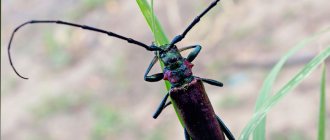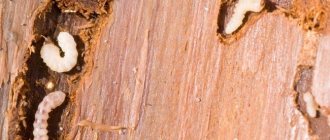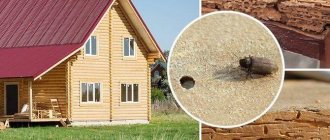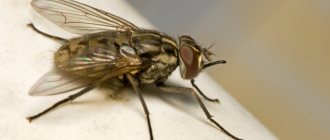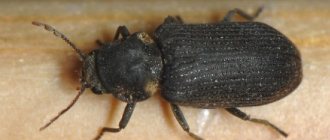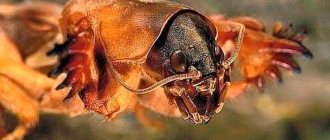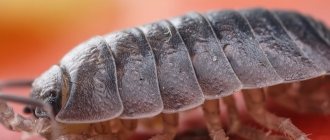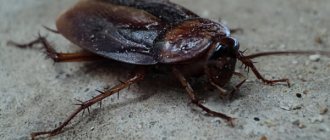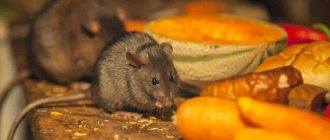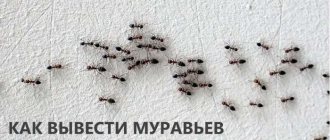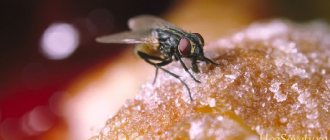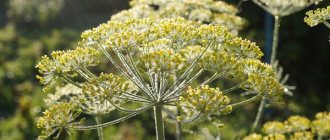The appearance of beetles in a wooden house is always unexpected: it seems that after construction nothing threatens your fresh log house. But wood-boring beetles do their “dark business” secretly and almost unnoticeably. But its consequences can be very depressing.
The vast majority of people are not even aware of the existing possibility of their home being “taken over” by battalions of insects that can make normal use of the building impossible. However, many owners of wooden houses have to face the problem of unwanted proximity to wood-boring beetles.
Content:
- Pest prevention
- Who is the grinder beetle?
- Longhorn beetle
- How to get rid of woodworm from wooden houses
- How to prevent woodworms
- Do-it-yourself woodworm control
- Professional remedies for woodworm
- Types of wood pests
- Reasons for the appearance of beetles in wooden buildings
- Video on the topic of fighting the borer beetle in a wooden house
Wooden houses have long been considered the best for living. They are warm in winter and cool in summer; the beauty of wood patterns caresses the eye. With proper care, such a house will serve its owners for a long time, protecting them from any bad weather and giving comfort to the whole family. But every house has its own weaknesses. In wooden houses these are wood pests. They must be fought harshly and uncompromisingly.
Pest prevention
Wood beetles in a wooden house bring a lot of trouble; if you miss the moment and leave events uncontrolled, then the matter can end in complete damage to the walls and beams of the building. Planned prevention should be a mandatory measure to preserve housing built from wood. It is much easier to prevent a problem than to solve it valiantly later. And in the fight against woodworm, victory may remain on his side.
Enjoying breakfast and lunch with delicious floors for several years, the grinder beetle and its family are capable of completely collapsing a house of any size. To avoid disastrous results from pests, a set of preventive actions should be carried out regularly.
Specifics of behavior
Most of the time, beetles are inside the tree, building labyrinths and tunnels. They leave their habitat only when it is almost completely destroyed and is no longer of interest to the pest. Having chosen a new tree, the bark beetle gnaws a hole, rushing deep into the tree, where its structure is especially tender and juicy.
It is important to note that each species of beetles gnaws through a specific structure of burrows, which together form a characteristic pattern for this species. Many specialists in the contours of the picture are able to determine what type of pest lives in the tree, and accordingly, they are able to choose the right method of control.
In fairness, it must be said that for all their destructiveness and destructiveness, bark beetles are considered forest health workers. They settle in trees that are in poor condition, and through their activities contribute to their replacement with young and healthy plants.
Who is the grinder beetle?
It belongs to the Coleoptera family, is large in size and is quite common in all regions of the country. Despite the many varieties, the habits and preferences of these insects are very similar. Initially, he occupied an important natural niche and processed fallen and broken trees, working as a forest orderly. But gradually the grinder beetle moved closer to human habitation and discovered a lot of tasty things for itself: furniture, books, cardboard and paper. But what he liked most was the houses themselves. The first signs that a borer beetle has infested a wooden house will be small holes in various elements and the appearance of small white caterpillars under wooden structures.
Damage caused by the bark beetle
Bark beetles are considered quite dangerous pests of green spaces. They destroy trees in forests, parks, as well as cultivated trees in gardens. Adults feed on plant tissue, but their larvae are considered the most harmful. Their livelihoods require a lot of food, so they quite actively destroy mature trees by making tunnels in them. They also penetrate the wooden structures of buildings and structures, rendering them unusable and in disrepair.
Beetles make passages in structural elements that, for a number of reasons, cannot be replaced. In this regard, such buildings can collapse at any time, which can lead to human injury or even casualties. In addition to making tunnels, bark beetles are carriers of certain fungi that parasitize the tree. If fungus also appears on wooden structures, the building will collapse in the near future.
Longhorn beetle
This insect also happily settles in wooden houses and it can be difficult to drive it out. If fine wood dust appears in the house, and small neat holes are found in wooden surfaces, these are traces of his activity. The second name of the insect is the woodcutter beetle, which speaks for itself. Creaking and tapping in the silence of the night should be regarded as a declaration of war and an urgent need to save the house from the aggressor.
The insect is quite large, more than 11 centimeters in length, the head is decorated with long antennae, the color ranges from dark brown to black. Once inside the house, he happily takes on partitions, wooden upholstery, floor boards, window frames and load-bearing beams. The longhorned beetle in a wooden house can cause enormous harm. The means of combating it are standard; the main thing is to immediately begin treatment at the first sign of the appearance of the pest.
Appearance of the typograph
Typograph bark beetle (Ips typographus).
This beetle has one distinctive feature. The rear end of their body ends in a wide depression, on both edges of which there are 4 teeth. Another large and thick tooth in the form of a club-shaped button is located on top. Biologists among themselves call this adaptation of these beetles “wheelbarrows.” The average length of an adult beetle is 4.5 mm. The outer hard cover is dark brown, appearing almost black.
How to prevent woodworms
A wooden house requires attention and care. A few simple rules will prevent the appearance of unwanted tenants.
- Primary processing of the material is carried out before construction begins. Such impregnations as “Pinotex”, “Antizhuk”, “Senezh” and “Phoenix” have proven themselves well.
- It is necessary to regularly inspect all surfaces for the appearance of holes and passages; pests should not be given a single loophole.
- Beetles readily settle in damp rooms, so you should regularly ventilate and dry the house, especially in the warm season.
- Cleanliness is the key not only to health, but also to the absence of pests in the house. All bulk products are best stored in jars with tightly sealed lids.
- Regular wet cleaning with disinfectants and wiping doors, windows and furniture with a mixture of turpentine, paraffin and creolin will reduce the appearance of the borer beetle in a wooden house to almost zero.
- Any piece of furniture in which a woodworm has infested must be immediately removed from the house and ceremonially burned.
Danger
It is believed that the main purpose of the bark beetle is sanitary cleaning of the forest from diseased, weak and old trees.
However, during an outbreak of mass reproduction, healthy trees are attacked, which causes irreparable damage to coniferous forests. If we compare it with medical terms, bark beetles are for trees like the immunodeficiency virus is for humans.
It is not the beetle itself that causes the greatest harm to trees, but its worm-like larvae. They are very voracious, and feed on wood throughout their active life until they pupate. Several larvae can destroy a tree in one year.
In addition to eating the bast, damage to the tree is caused by fungal spores, which the beetle brings there to feed the larvae. As a result, the space under the bark becomes covered with fungus, and the plant weakens and dies faster.
A great danger to humans are bark beetles, which settle not in living trees, but in the wooden structures of the house. They can damage the wood so much that the building collapses.
There are species of this subfamily, the larvae of which destroy everything in the house, including food and medicines.
Do-it-yourself woodworm control
First of all, it is necessary to determine the size of the disaster. To do this, you should carefully inspect all wooden surfaces and identify areas of damage. If the source is furniture, it is immediately removed from the home and disposed of. The most reliable way is to burn the affected objects. The passages and holes are checked using a screwdriver; if it is easily stuck to a great depth, the element will have to be replaced. If the damage is minor, then you can use improvised means. The following measures will give a good result:
- filling the passages with petroleum jelly, a mixture of naphthalene and gasoline, followed by sealing with paraffin or putty;
- heating to 60 C ° or freezing to -2 C ° or more;
- treatment with insecticide using a spray bottle.
Life process and damage to the tree
As already mentioned, the bark beetle lives in the most important layer of the tree, through which the assimilants of their crown are transported to the roots. It is here that the growth processes of pine or spruce occur, and damage caused by bark beetle larvae can cause the death of the plant
Having chosen a pine, spruce or fir, the beetle makes an entrance hole. To do this, he grinds through its bark, getting to the bast and sapwood. They are the most nutritious succulent tissues in which he lays his eggs. At this stage of infection, so-called “drill flour” appears on the bark, piles of which can be seen in front of the holes made by the pests. By its color you can determine in which part the female is currently “working”:
- If it is near the surface, the color of the flour is brownish-yellow;
- If you get to the wood, the color is much lighter - yellow-white or even just white.
Professional remedies for woodworm
If available means do not produce tangible results or the affected area is quite extensive. Then you will have to resort to professional means. The fight against the borer beetle in a wooden house is carried out using synthetic agents.
- The use of fast-acting insecticides is effective, but poses a danger to the health of people and animals, so treatment is carried out by spraying, you need to work in a protective suit in the absence of residents, carefully treating the surface and paying special attention to hard-to-reach places. After treatment, you need at least 4 hours for through ventilation.
- Residual insecticides work on the principle of slow poisoning of insects. They are placed in specially drilled holes in wooden surfaces, which are sealed with wax, paraffin or putty. The drugs “Prima”, “Anti-bug”, and “Wood Healer” are in particular demand.
- Larvae and adults are sensitive to the smell of phosphine. Fumigators will help solve the pest problem, but only in enclosed spaces.
The most radical way to fight is to call a specialized team to carry out a complete treatment of the house with professional poisons.
Destruction methods
From time immemorial, grinders have been neighbors with people, so methods of combating them have been known for a long time. There are many ways to kill beetles, but they all have a rather weak effect. The reason for this lies in the specific habitat of insects - it is impossible to penetrate their passages and ensure direct contact of insecticides with beetles and larvae.
For garden plants, the grinder is not so dangerous, since in winter they undergo natural treatment at low temperatures for a long time. It is more difficult if insects appear in residential or commercial premises.
Traditional methods
Let's consider several traditional methods of destroying the grinder:
- Vaseline oil . This composition is pipetted and syringed into the passages made by the grinder. At the end of the procedure, the holes are sealed with wax. The method is safe, since the oil is odorless and completely harmless, it does not burn and does not damage healthy wood. The procedure is repeated after 2 weeks.
- A mixture of kerosene and turpentine in a ratio of 3:1 . The application method is the same, pour it into the passages with a pipette. In this case, a specific smell appears in the premises, which lasts for quite a long time.
- A mixture of naphthalene (8 g) with benzene (80 ml) . In the same way, the composition is poured into the holes. If this is not possible, apply it to the surface with a brush. The smell from the product is very strong and does not dissipate for a long time.
- A mixture of carbolic acid, naphthalene and resin . They are combined in equal parts, mixed thoroughly and filled with the resulting composition into all the holes that could be found.
- Temperature treatment of problematic products . Temperatures above +60° and below -2° are destructive for larvae and insects. Accordingly, the products are taken out into the cold and kept for at least a day (several days, a week or more is recommended), or treated with hot steam. The second option is ineffective, since wood is an excellent heat insulator. Many insects located inside the passages easily tolerate the treatment. Cooling is more productive, but not all items can be processed in this way.
Traditional methods of fighting the grinder are quite effective, but have a lot of disadvantages. Most formulations have a strong, persistent odor that lasts for a long time. if the treatment was carried out in residential premises, the harmful effects will affect not only insects, but also people.
Use of insecticides and chemical compounds
The most effective methods of influencing the grinder are chemicals or special preparations - insecticides. However, they are used only in case of extensive damage to critical structural elements of the house, walls or ceilings. Chemical compounds are dangerous and must be used with caution and care.
The most effective means include:
. It is poured into the holes, which are previously cleaned of drill flour.
Copper sulfate solution- Use of aerosols . There are many similar compounds on sale (for example, Prima 71), which can quickly treat even hard-to-reach areas.
- Fumigation . This is a procedure in which an object is placed in a plastic cocoon (using a bag or wrapped in film), and a large amount of dichlorvos is sprinkled inside.
- Microwave radiation . This is a modern method in which the wood is heated from the inside, destroying the larvae. Treatment is carried out sequentially, bypassing all affected areas.
- Use of insecticides . These compounds are very effective, but for application it is necessary to use special tools and first remove the drill flour. There is a technology for continuous douching, when holes are drilled (about 1 mm) and the composition is injected into them with a syringe with a thin needle. You have to drill often, so the measure is considered forced, an extreme measure.
The success of the procedure depends largely on the precise choice of chemical or composition. Most users are not very good at this. Therefore, the best solution would be to contact a specialized company, where they will help you choose the right composition and carry out the procedure for exterminating insects.
The most effective insecticides recommended by experts are:
This is a group of antiseptics consisting of 5 drugs of varying intensity. 1 grade is used for preventive treatment of wood and garden plants, the rest are used as needed;
A biocidal preparation that is applied by brush, roller or spray. Suitable for treating premises and garden plants;
Used as a preventive and therapeutic agent for affected wood.
A powerful insecticide based on chlorpyrifos;
Types of wood pests
In nature, there are quite a few insects that prefer wood as a source of food. Bark beetles love to settle in living trunks, and woodworms have chosen buildings, pieces of furniture and other wooden structures.
House grinder
It has taken a liking to the outer walls of buildings and feels great eating raw wood. The small size of the insect makes it difficult to find, but the winding passages have not gone away and the pest can be identified by their presence.
Furniture sharpener
A rather cunning beetle, it hides in furniture and its upholstery and hides in any danger. It is not easy to detect, but with proper attention, small holes can be found that will confirm the home owner's worst fears. It is small in size and eats everything that contains cellulose.
Common comb grinder
This beetle has luxurious branched mustaches, which does not change the attitude towards it, since it is also a malicious pest of everything wooden. This variety is very difficult to breed. The larvae live a long time, from 5 to 20 years, turning into dust everything they can reach.
Bread grinder
He left the hard and insipid wood to his brothers and settled in the kitchen and pantry, where food supplies are stored and does not ignore cereals, grains, pasta and dried fruits. He not only spoils supplies, but also poisons them with elements of his life activity. If a pest is spotted, the products spoiled by it will have to be thrown away.
Varieties of wood beetles
insects use living trees and wooden buildings not only as a source of food. Their home is also located there; their larvae develop in the thickness of the tree, gnawing what the adult insects did not eat, sometimes causing even more harm. In nature they have natural enemies - birds, ants. And the fight against beetles in a wooden house falls entirely on the shoulders of the owners. To successfully resist pest invasions, you need to know them. The most common types are:
- a grinder, destroying wooden structures from the inside;
- a driller who does not eat wood, but colonizes the mycelium he needs in the drilled holes;
- a weevil that loves damp buildings and wood scraps thrown in the rain without proper protection;
- longhorned woodborers, which prefer coniferous wood, especially bark;
- Pseudobark beetles easily destroy even oak buildings, skillfully hiding in winding passages inside the woody area.
Main classification
All types of grinders can be divided into 2 large groups:
- those that exclusively attack woody plants and building materials, or household ones - furniture grinder, weevil;
- those that damage food supplies - bread, tobacco.
The main damage is no longer caused by adults, but by larvae. It is they who, during their development and before pupation, actively eat various materials and products, thereby causing damage. Adults usually do not live long, their main function is active reproduction.
Reasons for the appearance of beetles in wooden buildings
The main reason remains the use of wood for construction that has not undergone basic treatment with special impregnations against pests or the logs have already been infected with woodworm. Such a house will be constantly under threat of pest invasion. High indoor humidity also attracts unexpected visitors, providing them with excellent living conditions. Sometimes beetles and their larvae enter the house with pieces of furniture.
By maintaining cleanliness, constantly ventilating the house, maintaining an optimal level of humidity and regularly carrying out preventive treatments of wooden surfaces, you can protect the room from woodworms of all types.
Habitats
The main pests of forests - bark beetles - can be identified by their main feature - they feed on wood, raise offspring in it, overwinter and spend the main part of their life under the bark of a tree or in its nutritious part.
All types of bark beetles are herbivores. The main part of them are wood-eating insects, for which tree species are their habitat.
These are mainly spruce, pine, birch, cedar, and larch trees, the bast tissue of which bark beetles feed on.
There are species of beetles of this subfamily that live in the fruits and seeds of tree species and herbaceous plants. They are usually representatives of tropical species.
The geographic distribution of bark beetles is directly related to the location of the tree species that feed them. Bark beetles live in different territorial zones, with climatic conditions characteristic of these zones.
More often these are taiga areas, less often – steppes.
